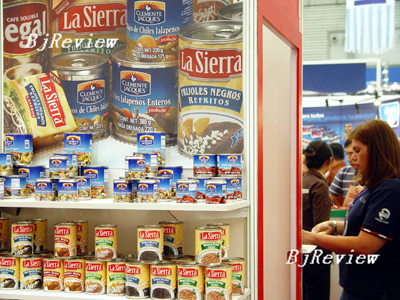
Ping pong it's not, but observers could be forgiven for thinking that the ongoing tit-for-tat food import bans between China and the United States, bear a more than uncanny resemblance to the game. Over the past two months both countries appear to have gone into laager mode over concerns that food is failing to meet safety and health standards, blaming each other openly for poor quality imports. However, the real concerns regarding globalized food production may become clouded, as the trade bans become a political tool for authorities in each country, analysts said.
The reality of the globalization of food production is that the entire chain of farmers to processors to distributors is under enormous pressure to keep costs down for consumers, said Steve Suppan, policy analyst at the nonprofit Institute for Agriculture and Trade Policy in Minneapolis, and lobbyists for major food producers do their best to ensure U.S. inspectors are under-funded or understaffed. Only about 1 percent of food imports are checked for contaminations ranging from salmonella to toxic pesticides such as DDT. An estimated 5,000 people in the United States die each year from unsafe food, according to the Centers for Disease Control and Prevention, and another 76 million become sick.
There are indications that food safety is becoming a token in a larger trade war between China and the United States. The issue first came to public attention this year when contaminated gluten added to pet food was traced to a Chinese manufacturer. U.S. politicians used the pet food scare to address concerns over food imports from China during the Strategic Economic Dialogue (SED) between the two countries held May 22-23 in Washington, D.C.
"We are likely to see these requirements increasingly being used, and abused, as a trade barrier," Leora Blumber, a Hong Kong-based trade adviser for law firm Heller Ehrman LLP, told the Wall Street Journal.
Since the SED, the United States has banned some seafood shipments and health supplements from China and China in turn has banned some imports of chicken and pork from the United States.
However, a very real and serious danger from contaminated food imports exists, Suppan said, because regulators have limited resources in ensuring the safety of food grown in or imported into the United States. The U.S. Food and Drug Administration (FDA) is responsible for the safety of food imports excluding meat and poultry, which are under the authority of the U.S. Department of Agriculture. The number of regulatory affairs employees at the FDA shrank from 4,003 in 2003 to 3,488 this year, and the number of non-criminal foreign and domestic inspections dropped from 11,566 in 2003 to 9,038 in 2005. However, the amount of food imports into the United States skyrocketed from 4 million shipments in 1997 to more than 15 million last year.
"The whole thing, from a management perspective, is just a shipwreck," Carl R. Nielsen, former director of the FDA division that handles import operations and policy, told the Boston Globe.
The problem of food safety is not unique to Chinese imports. According to FDA data, more imports from Mexico and India were stopped at the border from June 2006 to June this year. The most common violations were for salmonella and "filth" in the shipments.
Fixing the FDA's inspection operations is estimated to cost at least $400 million, and producers will be forced to pass on the costs of compliance to consumers.
Who is to blame?
Some U.S. consumers blame China for lax safety standards in food production, others blame the FDA for failing to catch violations or the government for failing to adequately fund the inspection programs. However, a silent but important influence on globalized food production has not been the subject of much public or media scrutiny.
| 